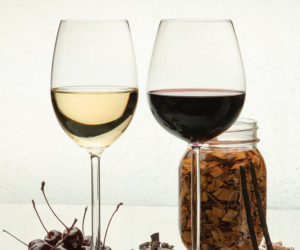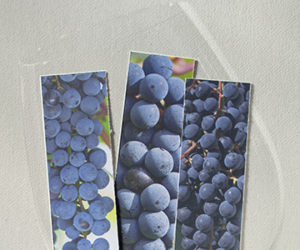Your first fortified wine can be a little intimidating. What method are you going to utilize? Sweet or dry? What type of spirits are you going to use? Then again, maybe you’re not like me and already have a game plan in place for your fortification process. That doesn’t mean you shouldn’t explore other means of fortificaton. In this column, we’ll take a swing through the various methods to produce a fortified wine of your own.
Port-style
On the sweeter end of the spectrum of fortified wines, you’ll find Port-style wines. A neutral grape-based spirit, often an unoaked brandy, is added to a red-wine fermentation in order to arrest the fermentation prior to completion . . . in other words, making sure fermentation will stall out. This leaves some residual sugar in the final product to balance out the intensity from the alcohol. Oftentimes, Port-style wines will add the spirits (fortify the wine) at about 6 °Brix. Starting off with a high Brix must can help winemakers because less spirit is required to get the level up to an appropriate level to stall the fermentation. Often winemakers need to raise the ABV to 16–18% in order to properly seize the fermentation, but Port-style wines on average range up near 20% ABV.
Sherry-style
Sherry-style fortified wines allow a white wine fermentation to run all the way until dryness before the fortifying spirit is added. This style of fortified wine is often a two-step fortification process. The first fortification adds just enough spirits to arrest any spoilage bacteria, but not enough to kill off the flor yeast (see next paragraph). The first fortification brings the ABV to 16–17%. A second fortification is often done to bring the ABV to 18–20%. Backsweetening of Sherry-style fortified wines is fairly common to help balance the flavors. For authentic backsweetening use white grape concentrate as the sweetnener.
Traditionally, Sherry would be allowed to age in a barrel and a flor bloom of yeast would develop on the surface. The Sherry’s flor would then protect the fortified wine from excessive oxidation during the aging process. Solera systems were utilized, allowing winemakers to pull Sherry from the barrel each year, and replacing that volume with a fresh charge of wine; maintaining the flor’s health. The Sherry can then be blended with different vintages, meaning that Sherries don’t have a vintage year. There is no reason home winemakers can’t develop their own solera system at home, but a separate space is suggested to keep the flor out of your winery if possible.
Miscellaneous Fortified Wines
While Port-style and Sherry-style are the two most popular fortified wines for home winemakers to replicate, there are plenty of other options available. Madeira is heated during the aging process, typically up to 110–125 °F (44–51 °C) for three months or more. Fortification time varies and they can be dry, semi-dry, semi-sweet, or sweet. The beautiful thing about Madeira is that it will never oxidize on you. You can leave the bottle open for years and it will still taste the same.
Vermouth is another common household name of a fortified wine. Vermouth comes both in the darker-colored, sweet vermouth, and the golden-colored, dry vermouth. Like several digestifs, vermouth has various herbs and spices added to create a unique profile and the timing of the fortification varies. Caramelized sugar is added to produce sweet vermouth.
Choose Your Spirit
You need to find your wine’s spirit companion when making a fortified wine. If you want to fortify a cherry wine, you may want to choose cherry brandy. Old World fortification practices usually means that a neutral grape brandy (unoaked) made from the same varietal as the base wine is utilized. Neutral grain-based spirits such as Everclear or high alcohol spirit may also be used by home winemakers to fortify wines at a lower cost than adding brandy. Or you could explore other options such as rum or Bourbon to add an extra layer of complexity. No matter what, I would suggest you test the mixture prior to adding to the full batch though.
How Much Spirits to Add
The most common technique used to calculate how much spirit to add to your wine is called a Pearson’s Square. It takes into account the volume and ABV of the base wine, the ABV of the spirit, and your desired final ABV. It’s a simple calculation to obtain the volume of spirit to add to the base wine and a more in-depth explanation can be found at https://winemakermag.com/article/the-pearson-square. Ed Kraus from E.C. Kraus Winemaking Supplies has on his blog a cheat sheet for winemakers who want to fortify 5 gallons (19 L) of wine with a standard 750 -mL, 80-proof brandy. He calculates that one bottle will add 1.5% ABV, two bottles adds 3.0%, three bottles will add 4.3%, four bottles will add 5.5%, five bottles will add 6.7%, and six bottles adds 7.7%. You can find that at https://blog.eckraus.com/fortifying-a-homemade-wine. Basically what that means is that if you start with a 14% wine and want to acheive about a 20% Port-style wine, expect to add roughly 4 to 5 bottles of brandy.
Now get out there and fortify it!






